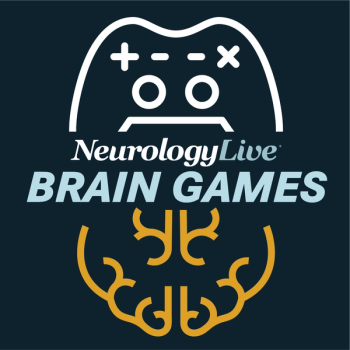
Improving CSAI Adherence and Its Evolving Role in PD
In this segment, Pagan shared strategies to enhance patient adherence and comfort with long-term CSAI use, and offered his perspective on the evolving role of CSAI in managing complex motor fluctuations in Parkinson disease.
At the
In this segment, Pagan outlined the clinical utility and evolving role of continuous subcutaneous infusions such as apomorphine and foslevodopa/carbidopa in managing motor fluctuations in PD. He emphasized that these therapies can improve ON time and reduce OFF periods without increasing troublesome dyskinesias. Pagan also noted the importance of patient education, motivation, and support in successful adoption of device-based treatments. He anticipates a paradigm shift in treatment timing, suggesting that subcutaneous infusions may become appropriate earlier in the disease course for select patients.
Transcript below edited for clarity.
Fernando L. Pagan, MD: For continuous subcutaneous administration—whether it's apomorphine or foslevodopa/carbidopa—I think it's just important for us as clinicians to really clearly explain what this means for patients. What I've seen in my clinical practice is that we definitely improve the ON time without troublesome dyskinesias, and we reduce the OFF time. So, the motor fluctuations are definitely better when we use these advanced therapies, especially when our patients are having significant motor fluctuations.
However, it's a device, so patients need to be a little bit motivated to be able to use it. They have to gain comfort with it. So, in order to be successful, a lot of education needs to be done—not just by us as physicians, but also by our nurses. Any type of support we can provide is important. I've learned along the way with PD treatments that there isn’t any medication I haven’t seen a patient try to stop. Patients often don’t like to take medicines. Sometimes there’s fatigue—it’s hard to keep up with it. I’ve even seen this in the diabetic world. Diabetics who are getting insulin—whether daily, once a day injectable, or continuous through subcutaneous administration—sometimes experience fatigue from using these devices.
But what I’ve also seen is that when there’s device fatigue, patients may come off the device and go back to oral therapy. Then they kind of get the sense that life was better with the subcutaneous administration. So, there may be some starting and stopping for certain patients. Other patients are very diligent, and they clearly see the benefit. And it’s hard to take medicine 4 or 5 times a day. So, the fact that we can get them off of those regimens with these subcutaneous infusions—I do think it's a conversation we have to have as physicians about what needs to be done for a better quality of life.
You may see patients who are having these complications, and maybe they decide, “I don’t want to deal with the device anymore. Maybe now, after 2 years, I want to consider using deep brain stimulation (DBS).” Some patients, for example, will go to DBS and stop the device. And then, later on, after their honeymoon period with DBS, they may go back to using both DBS and the subcutaneous infusions. So, these are not mutually exclusive—it’s a choice. I think it’s really important for you as a clinician to let your patients with motor fluctuations know that we have choices available.
We have extended-release formulations of oral carbidopa/levodopa. We have subcutaneous apomorphine infusions. We have subcutaneous foslevodopa/carbidopa infusions. We may even have another pump in the near future. What we’ve learned from all these treatments is that we see more ON time and fewer troublesome dyskinesias with every formulation—improvement compared with the immediate-release carbidopa/levodopa. And for some patients, DBS is more appropriate, or they prefer it.
So again, showing these patients that we have all these options—I think that’s exciting. We can really personalize the most appropriate treatment for each individual. And you may have some patients who say, “I don’t want to deal with the device. I’m going to go to DBS.” Others may say, “I’m not ready yet for brain surgery. Let’s try one of these devices.” These are the options we have for patients. And I think that’s why it’s so exciting to be a movement disorder neurologist today in 2025.
These new subcutaneous infusions—I think there’s going to be a paradigm shift in the treatment of PD. I don’t think we’re going to wait until the very end anymore. It doesn’t always have to be for the really, really advanced cases. For some patients, it may be appropriate to start a little bit earlier. For example, maybe the reason they’re having motor fluctuations is that they’re so busy they forget to take their medicine. Their alarm goes off at noon, but they get a phone call from their boss, and they’re on the phone for an hour. Then they’re OFF because they forgot or delayed taking the medication.
These types of issues can easily be addressed with subcutaneous infusions. Sometimes, the way the drug is delivered is also one of the reasons we develop these severe motor fluctuations. So, this can be an ideal treatment—maybe for someone a little bit younger. And maybe during the work week, I use the subcutaneous infusion, and then on the weekend, I go back to oral therapy when I’m a little more compliant with my medication.
I’m intrigued about where we’re going with these different medicines in the near future. But I do think there’s going to be a paradigm shift—it may not always be for the really advanced patients, but also for more moderate patients who are just starting to experience motor fluctuations. We now have other therapies available for that stage too, but again, it’s a choice. It depends on whether the patient wants to deal with the device or not.
Newsletter
Keep your finger on the pulse of neurology—subscribe to NeurologyLive for expert interviews, new data, and breakthrough treatment updates.
































